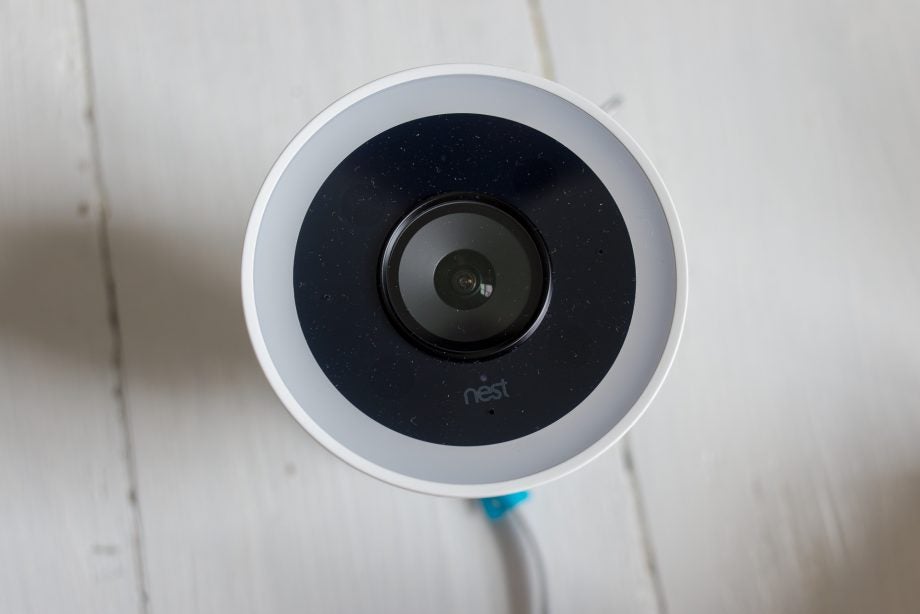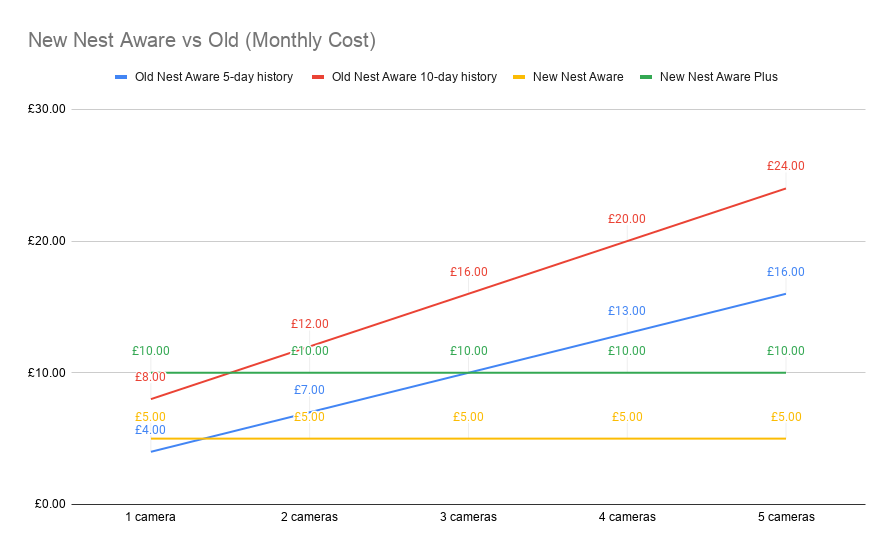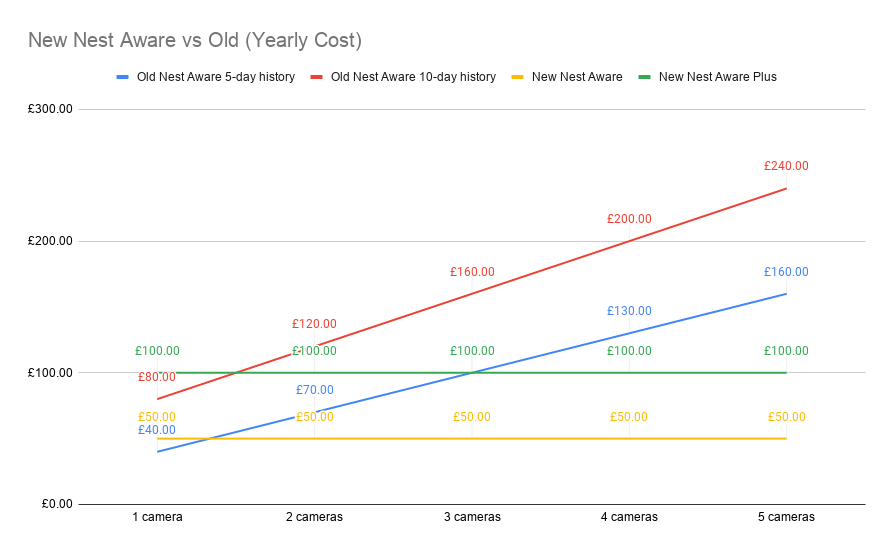New Nest Aware vs Old: Should you upgrade?

Nest Aware has consistently been one of the best cloud storage services for security cameras, although it has always been relatively expensive, increasing in price with every camera that you add.
That now changes with the New Nest Aware subscription, which gives you a monthly price for all of your cameras. Here we compare New Nest Aware vs Old, should you upgrade?
New Nest Aware vs Old – What’s the difference?
With the Old Nest Aware you paid a price per camera. The amount you paid, depended on the type of account you had, but the most popular one was £4 a month (£40 a year), which got you continuous recording and five-days of video storage. There was then a small discount for each additional camera that you added: each additional camera on a five-day plan cost an extra £3 a month.
The next step up was for 10-day history, which cost £8 a month per camera (£80 a year), with subsequent cameras costing £4 extra a month (£40 a year).
With the New Nest Aware, Google has tried to simplify things, with a single monthly subscription to cover all of your cameras. There are two new plans. The standard Nest Aware is £5 a month or £50 a year, which gets you 30-days of video history.
However, you no longer get continuous video recording and, instead, are limited to event video recordings. Much like rival systems, this means that video is only saved to the cloud when motion activity is detected in one of the Activity Zones that you create.
Step up to Nest Aware Plus, which costs £10 a month or £100 a year, and you get 60 days of event video history, but you also get the last 10 days of 24/7 footage as well.
Related: Best security camera
New Nest Aware vs Old – Continuous or event video, what’s best?
Having continuous video was always one of the strong points of Nest’s system, and you can still have this if you want. When you record 24/7, it means that you can scroll back through your timeline and view what happened before motion triggered an event. This can give you more context, or you can catch people hovering just outside of the camera’s field of view.
That said, continuous video eats up a lot of storage space and is expensive to have, hence the higher prices of Nest Aware versus the competition, such as Ring Protect. Moving to event history means that you lose some of the footage around an event, but you capture what is important.
It’s worth pointing out that with any Nest Aware plan you get the full set of features (depending on camera), including facial recognition, intelligent alerts (you can be told when a person is spotted only) and Activity Zones.
New Nest Aware vs Old – Which one is the better value?
Value can be hard to define, as what you want from your cameras and cloud storage is really important. But there are some basic maths that can help you choose.
If you’ve only got one Nest camera, then the old-style five-day continuous recording plan is cheaper than the new standard plan. With the new plan you might get 30-days of storage, but only of events; we believe that five days of continuous history is better and gives enough time to download any important clips.
If you want continuous recording on the New Nest Aware, you have to spend £10 a month on the Plus subscription, which is £6 a month more than the entry-level continuous recording plan.
If you had two cameras, then the New Nest Aware starts to work out cheaper, if you go for the standard £5 a month plan. And, even Nest Aware Plus is close in value for two cameras, particularly if you pay yearly. This also gets you double the amount of 24/7 storage and 60 days of event history, versus the standard 5-day package of old.
I’ve put a couple of charts in below that show you how the prices stack up for New Nest Aware vs Old, based on the number of cameras. I’ve made two graphs, monthly and yearly payments, to make the comparison easier. Just have a look at where the old plans intersect with the new ones and it will give you an idea of when you’ll start to save money.


New Nest Aware vs Old – Do you have to upgrade?
The good news is that if you have the Old Nest Aware, you don’t have to upgrade and your subscription will roll over monthly. However, if you’ve migrated your Nest account to a Google one, you can’t add additional cameras on the Old Nest Aware subscription, they must be on the New Nest Aware.
This move at least means that people happy with the price they’re paying and what they’ve got can put off an upgrade for now.
New Nest Aware vs Old – Should you upgrade?
If you’ve got one camera only, then sticking with the current Nest Aware is probably better value for you. If you’ve got two or more cameras, then you can save money, although you may need to sacrifice continuous recording.
Our advice, for people with two or more cameras, is to upgrade to the New Nest Aware for £5 a month and monitor how well this works for you. You can then upgrade to Nest Aware Plus at a later date if you miss the continuous recording.
If continuous recording is really important to you, then the new Nest Aware Plus is very good value, given how much storage you get. Remember to check the graphs above to work out where the new plans work out the same price or better than the old ones, and take into account that new Nest Aware Plus gives you 10-days of video history, rather than the old entry-level’s five days.


